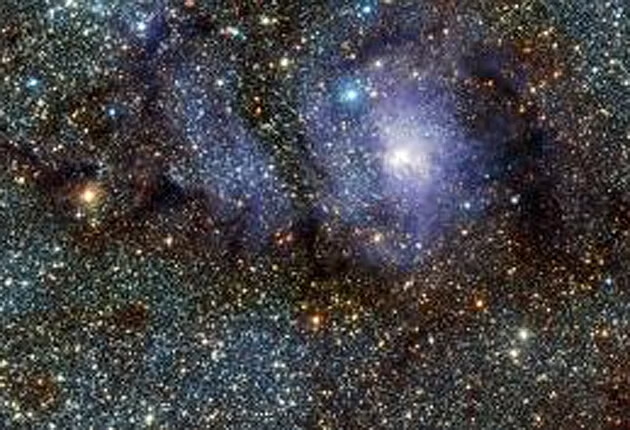Telescope captures new image of star nursery

A dazzling new image of a star nursery known as the Lagoon Nebula has been captured by a super-sensitive British-built telescope.
The Vista (Visible and Infrared Survey Telescope for Astronomy) telescope in Chile is operated by the European Southern Observatory.
Its ability to detect infrared light allowed astronomers to see fine details of the nebula which are normally obscured by dust.
The Lagoon Nebula is a hot star-forming region more than 4,000 light years away in the constellation Sagittarius.
Vista involves a consortium of institutions led by Queen Mary, University of London.
The telescope's camera was partly built at the Science and Technology Facilities Council (STFC) Rutherford Appleton Laboratory in Oxfordshire.
Professor Ian Robson, head of the STFC's UK Astronomy Technology Centre in Edinburgh, said: "The Lagoon Nebula has always been one of the 'picture book' images of astronomy, but seen in the optical rather than the infrared light of Vista, and these new images are breaking new grounds and further demonstrating how the hard work of this project is paying off in spades."
Vista is engaged in a huge survey to map central regions of our galaxy, the Milky Way, in greater detail than ever before.
Join our commenting forum
Join thought-provoking conversations, follow other Independent readers and see their replies
Comments
Bookmark popover
Removed from bookmarks